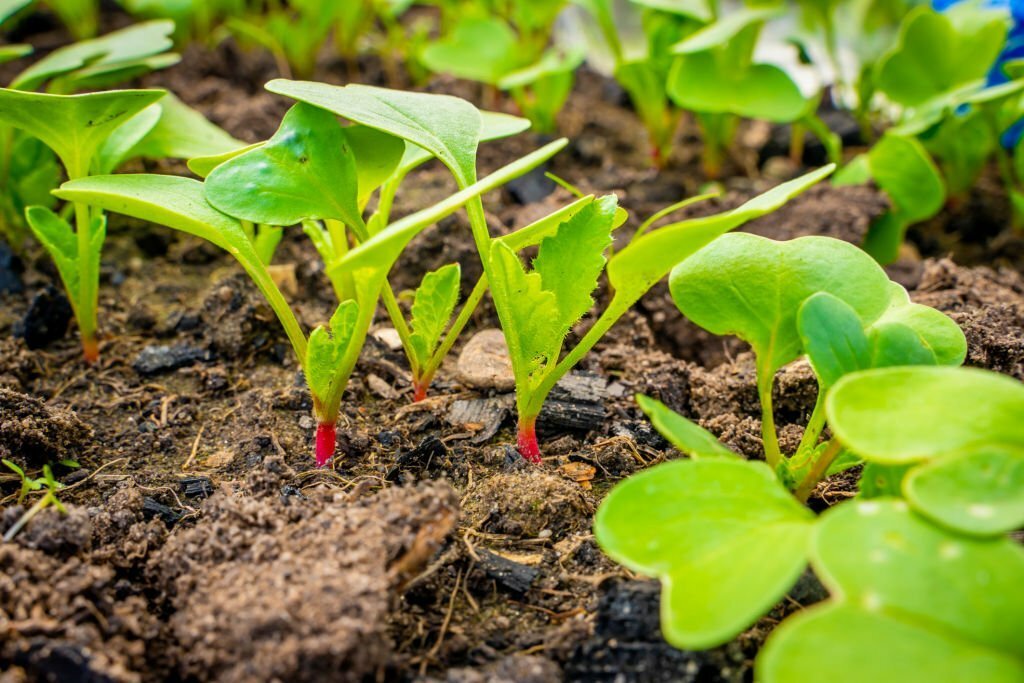Tortoises are herbivorous animals, and as such, their diet consists mostly of vegetables and fruits. However, not all vegetables are safe for tortoises to eat. One common question among tortoise owners is whether their pets can eat radish leaves.
Radish leaves are a common ingredient in many salads and dishes, and they are known for their health benefits. They are rich in vitamin C, calcium, and iron, among other nutrients. However, when it comes to feeding them to tortoises, there are some things to consider.
In this article, we will explore whether tortoises can eat radish leaves and what potential risks or benefits this may have for their health. We will also provide some tips on how to incorporate radish leaves into your tortoise’s diet safely and in moderation.
Understanding Tortoise Diet

When it comes to feeding tortoises, it’s important to understand their dietary needs. Tortoises are herbivores, which means they eat only plants. They require a diet that is high in fiber, low in protein, and low in fat.
The exact diet of a tortoise can vary depending on the species, age, and size of the tortoise. However, most tortoises require a diet that includes a variety of leafy greens, vegetables, and fruits.
Some of the best leafy greens to feed your tortoise include:
- Dandelion greens
- Collard greens
- Mustard greens
- Turnip greens
- Kale
- Radish leaves
Radish leaves are a great addition to a tortoise’s diet. They are high in fiber and low in protein and fat. However, it’s important to remember that radish leaves should be fed in moderation, as they can be high in oxalic acid, which can bind to calcium and prevent it from being absorbed.
In addition to leafy greens, tortoises should also be fed a variety of vegetables and fruits. Some good options include:
- Carrots
- Squash
- Bell peppers
- Apples
- Berries
It’s important to avoid feeding your tortoise foods that are high in protein, fat, or sugar. These foods can lead to health problems and should be avoided.
Overall, a tortoise’s diet should be high in fiber, low in protein and fat, and include a variety of leafy greens, vegetables, and fruits. By understanding your tortoise’s dietary needs, you can help ensure that they stay healthy and happy for years to come.
Can Tortoises Eat Radish Leaves?

We have researched and found that tortoises can eat radish leaves. Radish leaves are a good source of fiber, vitamins, and minerals such as vitamin C, potassium, and calcium. These nutrients are essential for the growth and development of tortoises.
However, it is important to note that radish leaves should be given to tortoises in moderation. Too much of it can cause digestive problems and can be harmful to their health. It is recommended to give radish leaves as a treat and not as a staple food.
When feeding radish leaves to tortoises, it is important to wash them thoroughly to remove any pesticides or chemicals that may be present. It is also recommended to chop the leaves into small pieces to make it easier for the tortoise to eat.
In summary, tortoises can eat radish leaves as a treat, but it should not be given as a staple food. It is important to give it in moderation and to wash and chop the leaves before feeding.
Benefits of Radish Leaves for Tortoises
Radish leaves are a great addition to the diet of tortoises. They offer a range of benefits for the health and wellbeing of your pet.
Nutritional Content
Radish leaves are a rich source of vitamins and minerals. They are particularly high in vitamin C, which is essential for the immune system. They also contain vitamin A, which is important for eye health, and vitamin K, which helps with blood clotting.
In addition, radish leaves are a good source of calcium, which is essential for strong bones and teeth. They also contain iron, which is important for healthy blood, and potassium, which helps to regulate blood pressure.
Hydration Source
Radish leaves are also a great source of hydration for tortoises. They are made up of around 90% water, which can help to keep your pet hydrated and healthy.
In addition, radish leaves are low in calories, making them a great option for tortoises who need to watch their weight.
Overall, radish leaves are a nutritious and hydrating addition to your tortoise’s diet. Just be sure to feed them in moderation, as too much can cause digestive upset.
Potential Risks of Radish Leaves

Radish leaves are generally safe for tortoises to eat, but there are some potential risks to keep in mind.
Overconsumption
As with any food, overconsumption of radish leaves can lead to digestive upset and diarrhea in tortoises. It is important to feed radish leaves in moderation and to vary your tortoise’s diet with other safe greens and vegetables.
Pesticide Exposure
Radish leaves are often treated with pesticides, which can be harmful to tortoises if ingested. It is important to thoroughly wash radish leaves before feeding them to your tortoise, or to purchase organic radish leaves to avoid pesticide exposure.
In summary, while radish leaves are generally safe for tortoises to eat, it is important to feed them in moderation and to be cautious of pesticide exposure.
Proper Feeding Techniques
When feeding tortoises, it is important to provide them with a balanced diet that meets their nutritional needs. While radish leaves can be a healthy addition to their diet, it is important to feed them in moderation and to follow proper feeding techniques.
Firstly, it is important to wash the radish leaves thoroughly before feeding them to your tortoise. This will remove any dirt, pesticides, or other contaminants that may be present on the leaves.
Secondly, it is important to chop the radish leaves into small pieces to make them easier for your tortoise to eat. This will also help to prevent choking or digestive issues.
It is recommended to feed radish leaves to your tortoise as part of a varied diet that includes other leafy greens, vegetables, and fruits. A good rule of thumb is to feed your tortoise a diet that consists of 80% leafy greens, 15% vegetables, and 5% fruits.
It is also important to monitor your tortoise’s weight and adjust their diet accordingly. Overfeeding can lead to obesity and other health issues, so it is important to feed your tortoise in moderation and to provide them with plenty of exercise.
In summary, radish leaves can be a healthy addition to your tortoise’s diet when fed in moderation and following proper feeding techniques. Remember to wash and chop the leaves, provide a varied diet, and monitor your tortoise’s weight to ensure they are receiving the proper nutrition.
Alternatives to Radish Leaves
If you’re looking for alternative greens to feed your tortoise, there are many options available that are safe and nutritious. Here are a few ideas to consider:
- Collard Greens: These leafy greens are packed with vitamins and minerals, including calcium, which is important for tortoise health. They’re also low in oxalates, which can interfere with calcium absorption. Collard greens can be fed raw or cooked, but it’s important to avoid seasoning or adding any oils or fats.
- Kale: Another nutritious option, kale is high in vitamins A, C, and K, as well as calcium and iron. It’s also low in oxalates. Like collard greens, kale can be fed raw or cooked, but avoid seasoning or adding any oils or fats.
- Endive: This leafy green is low in oxalates and high in fiber, making it a good choice for tortoises. It’s also rich in vitamins A and K. Endive can be fed raw or cooked.
- Dandelion Greens: While many people consider dandelions to be a nuisance, they’re actually a nutritious food for tortoises. Dandelion greens are high in vitamins A and C, as well as calcium and iron. They’re also low in oxalates. Make sure to only feed your tortoise dandelions that haven’t been treated with pesticides or other chemicals.
- Turnip Greens: These leafy greens are a good source of vitamins A and C, as well as calcium and iron. They’re also low in oxalates. Turnip greens can be fed raw or cooked, but avoid seasoning or adding any oils or fats.
Overall, there are many safe and nutritious alternatives to radish leaves that you can feed your tortoise. Just make sure to do your research and choose foods that are appropriate for your specific species of tortoise.
Conclusion
In summary, radish leaves can be a healthy and nutritious addition to a tortoise’s diet. They are low in calories and high in vitamins and minerals, making them a great source of nutrition for your pet. However, as with any new food, it is important to introduce radish leaves gradually and monitor your tortoise for any signs of digestive upset.
While radish leaves are generally safe for tortoises to eat, it is important to note that they should not make up the majority of their diet. Tortoises require a varied diet that includes a range of different fruits, vegetables, and other foods to ensure that they receive all the nutrients they need to stay healthy.
Overall, if you are looking for a healthy and nutritious treat to offer your tortoise, radish leaves are definitely worth considering. Just remember to offer them in moderation and alongside a varied diet to ensure that your pet receives all the nutrients they need to thrive.
Frequently Asked Questions

What vegetables are safe for tortoises to eat?
Tortoises are herbivores and require a diet rich in vegetables. Some of the safe vegetables for tortoises include kale, collard greens, dandelion greens, mustard greens, and turnip greens.
What fruits should I feed my tortoise?
Fruits should be fed to tortoises in moderation. Some of the safe fruits for tortoises include apples, bananas, and berries.
Can tortoises eat pumpkin leaves?
Yes, pumpkin leaves are safe for tortoises to eat. They are a good source of fiber and other nutrients.
What are some vegetables to avoid feeding tortoises?
Some vegetables should be avoided when feeding tortoises. These include spinach, rhubarb, and avocado.
Is it safe for red-footed tortoises to eat radishes?
Radishes are safe for red-footed tortoises to eat in moderation. However, they should not be a staple part of their diet.
Can Russian tortoises safely consume radish leaves?
Yes, Russian tortoises can safely consume radish leaves. However, they should be fed in moderation and not be a staple part of their diet.





